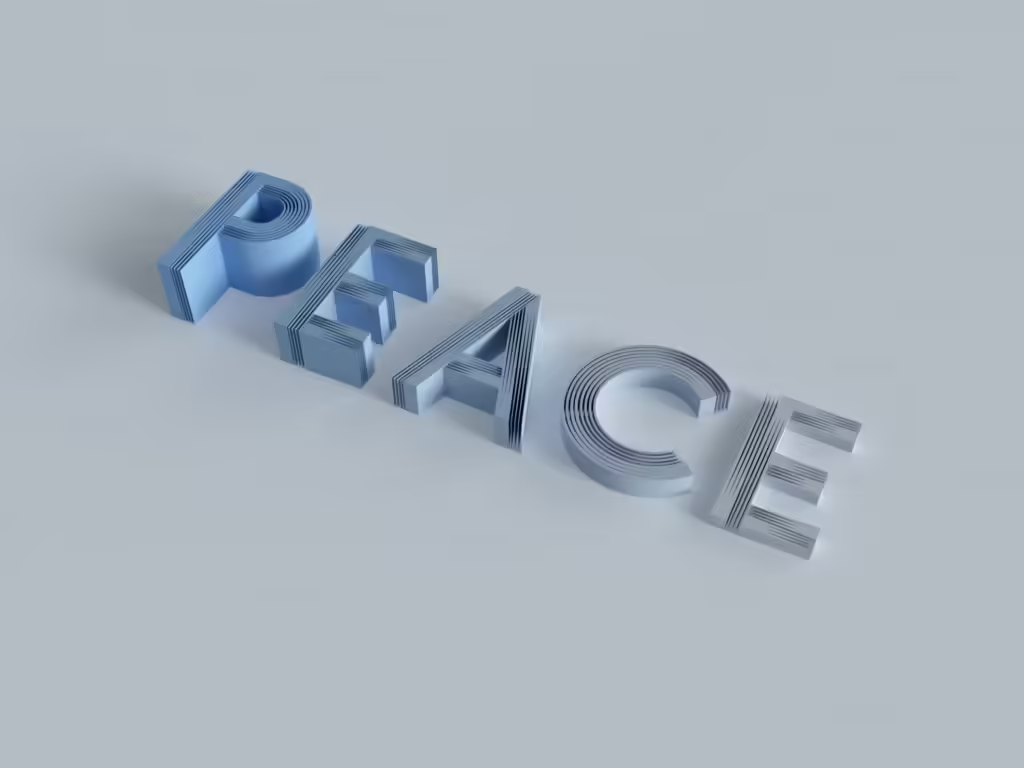Peace of Mind as the Launchpad to Your Financial Dreams In USA
The Emergency Fund Effect: Peace of Mind as the Launchpad to Your Financial Dreams
Financial planning often gets framed as a series of numbers: income, expenses, budgets, and retirement goals. While these are crucial components, a successful financial journey goes beyond the strictly quantitative. The emotional and psychological aspects play a vital role, and a key element in this arena is the often-overlooked emergency fund.
This blog post delves into the power of the emergency fund, not just as a safety net but as a catalyst for a brighter financial future. We’ll explore how an emergency fund goes beyond emergency preparedness and fosters peace of mind, reduces financial stress, empowers calculated risks, and frees up mental space to pursue your financial goals.
From Reactive to Proactive: The Shift in Mindset
Traditionally, emergency funds are viewed as a reactive measure – a buffer against unexpected events like car repairs, medical bills, or job loss. This reactive approach, however, keeps us in a state of constant worry, waiting for the “rainy day” to arrive.
The true power of an emergency fund lies in its ability to shift our mindset from reactive to proactive. It transforms from a mere safety net to a launchpad for our financial dreams. Here’s how:
**1. Reduced Financial Stress: The Gift of Peace of Mind **
Life throws curveballs – that’s a given. But with an emergency fund in place, the financial impact of these unexpected events becomes manageable. Imagine a leaky roof – a stressful situation regardless. But if you don’t have savings, the stress intensifies. You might resort to high-interest debt, putting a strain on your future finances. An emergency fund, however, allows you to address the issue head-on, minimizing the financial stress and allowing you to focus on the repair itself.
This peace of mind extends to everyday life. With a financial safety net in place, you’re less likely to experience anxiety around everyday expenses. That unexpected car repair won’t throw your entire budget off track. This reduced stress creates a more positive relationship with money, allowing you to make sound financial decisions without the pressure of immediate needs.
2. Calculated Risks – Stepping Stones to Growth
Financial goals often require taking calculated risks. Maybe you want to invest in a promising business idea, pursue further education, or negotiate a raise with confidence. But without an emergency fund, the fear of financial hardship can hold you back. You might cling to a secure but unfulfilling job or hesitate to invest in your future.
Having an emergency fund empowers you to take these calculated risks. You can pursue opportunities with a safety net in place, knowing you have a financial cushion to fall back on if things don’t go as planned. This can lead to greater professional and financial growth in the long run.
3. Mental Space for Goal Setting and Planning
The constant worry about potential financial emergencies consumes mental space. It makes it difficult to focus on long-term goals and financial planning. Imagine trying to map out your retirement strategy while constantly stressed about upcoming bills.
An emergency fund frees up that mental space. With the peace of mind it provides, you can dedicate your cognitive energy to actively pursuing your financial goals. You can delve into research, set realistic targets, and develop a personalized financial plan with greater clarity.

Building Your Emergency Fund: A Step-by-Step Guide
Now that we’ve explored the transformative power of an emergency fund, let’s dive into the practical steps of building one:
1. Determine Your Needs:
The ideal emergency fund amount depends on your individual circumstances. Consider your monthly expenses, your job security, and your dependents. Generally, experts recommend having 3-6 months’ worth of living expenses saved in your emergency fund. However, if you work in an unstable industry or have significant debt, aiming for a higher target might be wise.
2. Prioritize and Automate:
Building an emergency fund takes discipline. Make it a priority within your budget. Allocate a specific amount of your income every month towards this fund. Consider setting up automatic transfers from your checking account to your emergency savings account. This “set it and forget it” approach ensures consistent saving without relying on willpower alone.
3. Choose the Right Account:
For your emergency fund, consider a high-yield savings account. This offers a balance between accessibility and a modest return on your savings. Aim for an account with minimal withdrawal restrictions to ensure you can access your funds promptly when needed.
4. Track Your Progress and Celebrate Milestones:
Building an emergency fund takes time. Track your progress regularly to stay motivated. Celebrate milestones as you reach them, reinforcing the importance of your goal.
Investing for the Future While Protecting Your Present
It’s important to understand that your emergency fund isn’t meant to be a long-term investment vehicle. While it.
The Emergency Fund Effect: Peace of Mind as the Launchpad to Your Financial Dreams
Financial planning often gets framed as a series of numbers: income, expenses, budgets, and retirement goals. While these are crucial components, a successful financial journey goes beyond the strictly quantitative. The emotional and psychological aspects play a vital role, and a key element in this arena is the often-overlooked emergency fund.
This blog post delves into the power of the emergency fund, not just as a safety net but as a catalyst for a brighter financial future. We’ll explore how an emergency fund goes beyond emergency preparedness and fosters peace of mind, reduces financial stress, empowers calculated risks, and frees up mental space to pursue your financial goals.
From Reactive to Proactive: The Shift in Mindset
Traditionally, emergency funds are viewed as a reactive measure – a buffer against unexpected events like car repairs, medical bills, or job loss. This reactive approach, however, keeps us in a state of constant worry, waiting for the “rainy day” to arrive.
The true power of an emergency fund lies in its ability to shift our mindset from reactive to proactive. It transforms from a mere safety net to a launchpad for our financial dreams. Here’s how:
*1. Reduced Financial Stress: The Gift of Peace of Mind *
Life throws curveballs – that’s a given. But with an emergency fund in place, the financial impact of these unexpected events becomes manageable. Imagine a leaky roof – a stressful situation regardless. But if you don’t have savings, the stress intensifies. You might resort to high-interest debt, putting a strain on your future finances. An emergency fund, however, allows you to address the issue head-on, minimizing the financial stress and allowing you to focus on the repair itself.
This peace of mind extends to everyday life. With a financial safety net in place, you’re less likely to experience anxiety around everyday expenses. That unexpected car repair won’t throw your entire budget off track. This reduced stress creates a more positive relationship with money, allowing you to make sound financial decisions without the pressure of immediate needs.
2. Calculated Risks – Stepping Stones to Growth
Financial goals often require taking calculated risks. Maybe you want to invest in a promising business idea, pursue further education, or negotiate a raise with confidence. But without an emergency fund, the fear of financial hardship can hold you back. You might cling to a secure but unfulfilling job or hesitate to invest in your future.
Having an emergency fund empowers you to take these calculated risks. You can pursue opportunities with a safety net in place, knowing you have a financial cushion to fall back on if things don’t go as planned. This can lead to greater professional and financial growth in the long run.

3. Mental Space for Goal Setting and Planning
The constant worry about potential financial emergencies consumes mental space. It makes it difficult to focus on long-term goals and financial planning. Imagine trying to map out your retirement strategy while constantly stressed about upcoming bills.
An emergency fund frees up that mental space. With the peace of mind it provides, you can dedicate your cognitive energy to actively pursuing your financial goals. You can delve into research, set realistic targets, and develop a personalized financial plan with greater clarity.
Building Your Emergency Fund: A Step-by-Step Guide
Now that we’ve explored the transformative power of an emergency fund, let’s dive into the practical steps of building one:
1. Determine Your Needs:
The ideal emergency fund amount depends on your individual circumstances. Consider your monthly expenses, your job security, and your dependents. Generally, experts recommend having 3-6 months’ worth of living expenses saved in your emergency fund. However, if you work in an unstable industry or have significant debt, aiming for a higher target might be wise.
2. Prioritize and Automate:
Building an emergency fund takes discipline. Make it a priority within your budget. Allocate a specific amount of your income every month towards this fund. Consider setting up automatic transfers from your checking account to your emergency savings account. This “set it and forget it” approach ensures consistent saving without relying on willpower alone.
3. Choose the Right Account:
For your emergency fund, consider a high-yield savings account. This offers a balance between accessibility and a modest return on your savings. Aim for an account with minimal withdrawal restrictions to ensure you can access your funds promptly when needed.
4. Track Your Progress and Celebrate Milestones:
Building an emergency fund takes time. Track your progress regularly to stay motivated. Celebrate milestones as you reach them, reinforcing the importance of your goal.